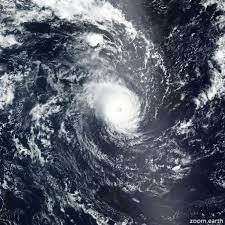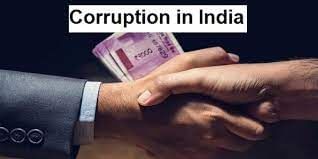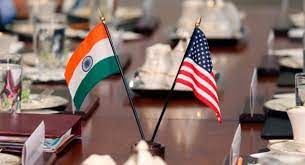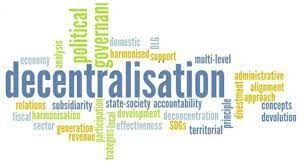UPSC Daily Current Affairs- 11th March 2023 | Current Affairs & Hindu Analysis: Daily, Weekly & Monthly PDF Download
GS-I
Coffee production

Why in News?
Recent research said that coffee production across the world is threatened by synchronous crop failures, characterised by broad, simultaneous yield losses in various countries at the same time.
About Coffee production:
- The vast majority of the world’s coffee comprises two species — Coffea Arabica (Arabica) and Coffea Canephora (Robusta). Coffee, especially Arabica, is considered a sensitive crop, vulnerable to climate variability and change.
- Climatic conditions required for coffee production
- It requires a hot and humid climate for its growth.
- Temperatures ranging between 15°C and 28 °C
- Rainfall: 150 to 250 cm.
- Soil: Well-drained, loamy soil containing a good deal of humus and minerals like iron and calcium are ideal for coffee cultivation.
- It is generally grown under shady trees.
- Dry weather is necessary at the time of ripening of the berries.
- It is grown on hill slopes at elevations from 600 to 1,600 metres above sea level.
- In India coffee is largely cultivated in Karnataka, Kerala, Tamil Nadu, Andhra Pradesh and Odisha, among which, Karnataka produces the most with over 70% of the total output.
Source: Down To Earth
What is Cyclone Freddy?

Why in News?
World Meteorological Organisation recently announced the constitution of an expert committee to evaluate the intensity and lifespan of Cyclone Freddy, which is on track to set a record as the longest-lasting tropical cyclone on record.
About Cyclone Freddy:
- Origin: It originated off the northern coast of Australia and became a named storm on February 6, 2022.
- It crossed the entire South Indian Oceanand traveled more than 8,000 kilometers, affecting Mauritius and La Réunion, before making landfalls in Madagascar two weeks later and then Mozambique.
- Freddy was the first tropical cyclone in the Southern Hemisphere to undergo six separate rounds of rapid intensification.
- It also holds the record for all-time accumulated cyclone energy (ACE) (storm strength during its lifetime) for the Southern Hemisphere.
- Freddy is fuelled by the energy provided by the warm ocean surface, consistently sourcing heat and moisture throughout its lifetime.
What is a Tropical Cyclone?
- It is a rapidly rotating storm originating over warm tropical oceans from where it draws the energy to develop.
- It has a low-pressure center and clouds spiraling towards the eyewall surrounding the "eye", the central part of the system where the weather is normally calm and free of clouds.
- Its diameter is typically around 200 to 500 km but can reach 1000 km.
- The winds blow counterclockwise in the Northern Hemisphereand clockwise in the Southern Hemisphere.
- A tropical cyclone brings very violent winds, torrential rain, high waves, and, in some cases, very destructive storm surges and coastal flooding.
Source: Indian Express
GS-II
Corruption in India

Why in News?
The impact of corruption is especially heavy on common citizens and even more on poorer and vulnerable persons in communities.
About Corruption:
- Corruption refers to misusing public power for personal gain.
- It can be done by an elected politician, civil servant, journalist, administrator of a school, or anyone in authority.
- Apart from public corruption, we also have private corruption between individuals and businesses.
- Thus, the corruption definition applies to different forms.
Corruption Statistics in India
- The annual Kroll Global Fraud Report noted that India has among the highest national incidences of corruption (25%).
- The same study also noted that India reports the highest proportion reporting procurement fraud (77% as well as corruption and bribery (73%).
- India has the highest rate of bribery and use of personal links to access public services such as healthcare and education in Asia, according to a survey released by global civil society Transparency International.
- India is in the 85th position among 180 countries in the Corruption Perception Index, 2021.
- It uses a scale of 0 to 100, where 0 is highly corrupt and 100 is very clean.
Reasons for Corruption:
- Personal gains and self-preservation:
- The corrupt want to accumulate power and wealth, which they believe will perpetuate their lineage in the world meeting self-preservation and existential needs.
- Criminality of outcomes:
- Public money is siphoned off and welfare schemes do not reach the beneficiaries.
- It borders on criminality when poor people are forced to shell out money for jobs, education, and even primary healthcare.
- Allocation of national resources to cronies for a price creates economic disparities, destroys level playing fields, discourages free markets and competition, and deters foreign investors.
- Low rate of conviction:
- The progress of investigations and rate of conviction in high-profile cases initiated by the Central Bureau of Investigation (CBI) and Enforcement Directorate (ED) do not inspire much confidence in the public to believe that there has been any substantive change in this situation.
- Corruption during elections:
- Economists and political pundits believe that it will not be possible to eradicate corruption till a solution can be found for funding of elections.
- Legitimising political donations was a minuscule beginning. The much-maligned Electoral Bonds (EBs) was a step in the right direction.
- Though far from fool proof, it is certainly a cleaner method of mobilising funds rather than black money transferred through hawalas.
- Changing nature of Corruption:
- Since liberalisation in India, the nature of corruption has become more complex.
- With technological development, there are opportunities to prevent corruption but also areas where corruption can be much more difficult to trace, particularly in fields like cryptocurrency.
Government Initiatives:
- Indian government has constituted a Special Investigation Team (SIT) on black money.
- It has enacted a comprehensive and more stringent new law – the Black Money (Undisclosed Foreign Income and Assets) and Imposition of Tax Act, 2015.
- There’s also a Benami Transactions (Prohibition) Amendment Act, 2016, which empowers the authorities to attach and confiscate Benami properties.
- Law enforcement agencies such as CBI have done a great deal to reduce corruption.
Right To Information Act, 2005:
- The intent behind the enactment of the Act is to promote transparency and accountability in the working of Public Authorities.
Prevention of Corruption Act:
- The Prevention of Corruption Act, 1988 is an Act of the Parliament of India enacted to combat corruption in government agencies and public sector businesses in India.
Amendment to the Act:
- As the Prevention of Corruption Act saw limited success in preventing corruption in Government departments and prosecuting and punishing public servants involved in corrupt practices, an amendment was enacted (Amendment Act) and brought into force in 2018.
- The Amendment Act attempted to bring the Prevention of Corruption Act in line with United Nations Convention against Corruption 2005, which was ratified by India in 2011.
Whistle Blowers Protection Act, 2014:
- The Act seeks to protect whistleblowers, i.e. persons making a public interest disclosure related to an act of corruption, misuse of power, or criminal offence by a public servant.
- It is provided by the Right To Information Act, of 2005, and it has been an important weapon for whistleblowers in previous years.
- The RTI Act, 2005 is also called a ‘twin sister’ of whistleblowing.
The Lokpal and Lokayukta Act, 2013:
- The Lokpal and Lokayukta Act, 2013 provided for the establishment of Lokpal for the Union and Lokayukta for States.
- The Lokayukta is an anti-corruption authority constituted at the state level.
- It investigates allegations of corruption and maladministration against public servants and is tasked with the speedy redressal of public grievances.
The Lokpal and Lokayuktas (Amendment) Bill, 2016:
- The Bill amends the Lokpal and Lokayuktas Act, 2013 in relation to the declaration of assets and liabilities by public servants.
- It requires a public servant to declare his assets and liabilities, and that of his spouse and dependent children.
Way Forward:
Corruption encourages dysfunctionality in government, perpetrates economic inefficiency and can be a serious threat to national security. The problem is complex and there cannot be a “one size fits all” solution. There must be different strokes for different people as it were.
Source: Indian Express
What is the U.S.-India initiative on Critical and Emerging Technology (iCET)?

Why in News?
India’s Minister of Commerce and Industry and U.S. Secretary of Commerce welcomed the recently launched U.S.-India initiative on Critical and Emerging Technology (iCET).
About the U.S.-India initiative on Critical and Emerging Technology (iCET):
- It was launched by the US President and Indian Prime Minister on the sidelines of the Quad summit on May 2022.
- Goal: To elevate and expand Indo-U.S. strategic technology partnership and defense industrial cooperation between the governments, businesses, and academic institutions of the two countries.
- The initiative will be spearheaded by the National Security Council Secretariat in India and the US National Security Council.
- The initiative would help forge links between the government, academia, and industry in areas such as AI, quantum computing, 5G/6G, biotech, space, and semiconductors.
- Under iCET, the two sides have identified six focus areas of co-development and co-production:
- strengthening innovation ecosystems;
- defense innovation and technology cooperation;
- resilient semiconductor supply chains;
- space;
- STEM (science, technology, engineering, and math) talent;
- next-generation telecom;
Democratic Decentralisation

Why in News?
2023 is the 30th anniversary of the passing of the 73rd and 74th Amendments. These amendments are made in the constitution in order to promote the democracy at grassroot level.
About decentralisation in India:
- Democratic decentralization is the process of devolving the functions and resources of the state from the centre to the elected representatives at the lower levels so as to facilitate greater direct participation of citizens in governance.
- A major step towards decentralisation was taken in 1992 and the Constitution was amended to make the third-tier of democracy more powerful and effective.
- The Constitution (73rd Amendment) Act, 1992 has added a new part IX.
- The Amendment envisages the Gram Sabha as the foundation of the Panchayat Raj System to perform functions and powers entrusted to it by the State Legislatures.
- It provides for a three tier Panchayat Raj System at the village, intermediate and district levels.
Significance of Decentralisation:
- It was the creation of an idealistic imagined space that would be above politics; that would free it from the usual give and take and contests of politics.
- Local government would be held to a higher standard than other tiers of governance.
- For example, we take partisanship and competition to be central to politics elsewhere.
- But somehow, we expected panchayats to be this font of consensus (some states give incentives for election by consensus).
- And, it has to be said, there was no serious demand side push for decentralisation.
- The 73rd and 74th amendments did achieve a lot:
- In some areas, they led to the state acquiring a distinct presence on the ground;
- they gave millions of citizens identities as representatives;
- they provided a conduit for sharing power;
- they created deliberative spaces, led to the creation of new norms, especially around the participation of women and a churn in local elites
- They slowly built up local capacities, and led to a wide range of functions being devolved to local government.
Key issues associated with local govt:
- Local governments remain hamstrung and ineffective; mere agents to do the bidding of higher level governments.
- Democracy has not been enhanced in spite of about 32 lakh peoples’ representatives being elected to them every five years, with great expectation and fanfare.
- The constraint lies in the design of funding streams that transfer money to local governments.
- The volume of money set apart for them is inadequate to meet their basic requirements.
- Much of the money given is inflexible; even in the case of untied grants mandated by the Union and State Finance Commissions, their use is constrained through the imposition of several conditions.
- There is little investment in enabling and strengthening local governments to raise their own taxes and user charges.
- Local governments do not have the staff to perform even basic tasks.
- Furthermore, as most staff are hired by higher level departments and placed with local governments on deputation, they do not feel responsible to the latter; they function as part of a vertically integrated departmental system.
- The current Union government has further centralised service delivery by using technology, and panchayats are nothing more than front offices for several Union government programmes.
- Criminal elements and contractors are attracted to local government elections, tempted by the large sums of money now flowing to them.
- They win elections through bribing voters and striking deals with different groups.
Suggestive Measures:
- Democratic decentralisation is barely alive in India and to curb existing issues gram Sabhas and wards committees in urban areas have to be revitalised.
- Consultations with the grama sabha could be organised through smaller discussions where everybody can really participate.
- Even new systems of Short Message Services, or social media groups could be used for facilitating discussions between members of a grama sabha.
- Local government organisational structures have to be strengthened.
- Panchayats are burdened with a huge amount of work that other departments thrust on them, without being compensated for the extra administrative costs.
- Local governments must be enabled to hold State departments accountable and to provide quality, corruption free service to them, through service-level agreements.
- India’s efforts in decentralisation represent one of the largest experiments in deepening democracy.
- We can keep track of corrupt local government representatives; at the higher level
- Given diverse habitation patterns, political and social history, it makes sense to mandate States to assign functions to local governments.
Way Forward
- Gram Sabhas and wards committees in urban areas have to be strengthened in order to achieve the objective of people’s participation in real terms.
- Maximum efforts should be made towards recruitment and appointment of support and technical staff to ensure the smooth functioning of panchayats.
- A comprehensive mechanism should be adopted for taxation at the local levels as without local taxation, Gram Panchayats cannot be held accountable.
- The Ministry of Panchayati Raj should monitor the release and expenditure of Finance Commission grants in order to ensure that there is no delay in their release.
- It should also be ensured that the allotted grants are utilised in a proper and effective manner.
- Panchayats should be encouraged to carry out local audits at regular intervals so that Finance Commission grants are not delayed.
Source: Indian Express
GS-III
World Wide Fund for Nature and the report
Why in News?
A Recent study reported that over 170 trillion plastic particles are floating in the oceans.
Key highlights of the study :-
- Oceans across the world are polluted by a growing plastic smog composed primarily of microplastics, according to the study.
- Egypt, Nigeria, and South Africa are the largest contributors to plastic leakage on the continent.
- Algeria and Morocco joined the list of top 20 coastal countries contributing to marine plastic pollution, said a 2022 report by World Wide Fund for Nature.
- India: the waste dumped in the south Asian seas daily is generated from 60 major Indian cities, according to UNEP.
Policy interventions so far:-
- In 1988, the International Convention for the Prevention of Pollution from Ships added Annex V, which established legally-binding agreements among 154 countries to end the discharge of plastics from naval, fishing, and shipping fleets.
- These interventions were followed by the United Nations Convention on the Law of the Sea in 1982 and the Convention on the Prevention of Marine Plastic by Dumping of Wastes and other Matter in 1972.
- In 1991, the Plastic Industry Trade Association launched ‘Operation Clean Sweep’ with the goal of zero loss of plastic pellets, powders, and flakes from factories with decreasing pellet ingestion in biota observed.
About World Wide Fund for Nature:-
- It is an international non-governmental organization.
- It is working in the field of wilderness preservation and reduction of human impact on the environment.
- It was established in 1961.
- It is headquartered in Gland, Switzerland.
- It is the world’s leading conservation organization and works in more than 100 countries.
- WWF aims to stop the degradation of the planet’s natural environment and build a future in which humans live in harmony with nature.
- Currently, its work is organized around these six areas: food, climate, freshwater, wildlife, forests, and oceans.
- Publications: Living Planet Report, every two years since 1998.
Source: DOWN TO EARTH
ALH Dhruv helicopters

Why in News?
The defence forces have halted the operations of the ALH Dhruv helicopters till the time investigators find the reason behind the accident that took place off the Mumbai coast recently.
About ALH Dhruv helicopters:
- Advanced Light Helicopter (ALH) Dhruv is a multi-role and multi-mission light utility helicopter in the 5.5-ton weight class, intended for both military and civil operators.
- It is developed indigenously by Hindustan Aeronautics Limited (HAL).
- The ALH choppers are operated by all three Indian defense forces, including the Army, Navy, and Air Force, along with the Indian Coast Guard.
- The major variants of Dhruv are classified as Dhruv Mk-I, Mk-II, Mk-III & Mk-IV.
- Exported countries: Bolivia, Myanmar, Israel, Maldives, and Nepal.
- The Mk-IV version of the HAL ALG Dhruv helicopter is the Armed variant for Attack, Close Air Support, and High altitude operations.
- Features of Dhruv Mk-IV:
- It is also called ALH Rudra and can carry a 20 mm Turret Gun, 70 mm Rocket, and Air to Air missiles.
- It has a twin-engine configuration allowing continued flight virtually throughout the flight envelope.
- It has a maximum take-off weight of 5800 kg and a range of 590 km.
- ALH Mk-IV has a rigid rotor design making it aggressively maneuverable in air.
- It has a dedicated Electronic Warfare suite for self-protection.
- Its countermeasures suite can include: radar and missile detectors, infrared jammer, chaff and flare dispensers.
Source: Indian Express
|
38 videos|5264 docs|1112 tests
|
FAQs on UPSC Daily Current Affairs- 11th March 2023 - Current Affairs & Hindu Analysis: Daily, Weekly & Monthly
| 1. What is the significance of GS-I in the UPSC exam? |  |
| 2. What is the focus of GS-II in the UPSC exam? |  |
| 3. What are the subjects covered in GS-III of the UPSC exam? |  |
| 4. How can I prepare for GS-I in the UPSC exam? |  |
| 5. What are the key areas to focus on for GS-II in the UPSC exam? |  |






















